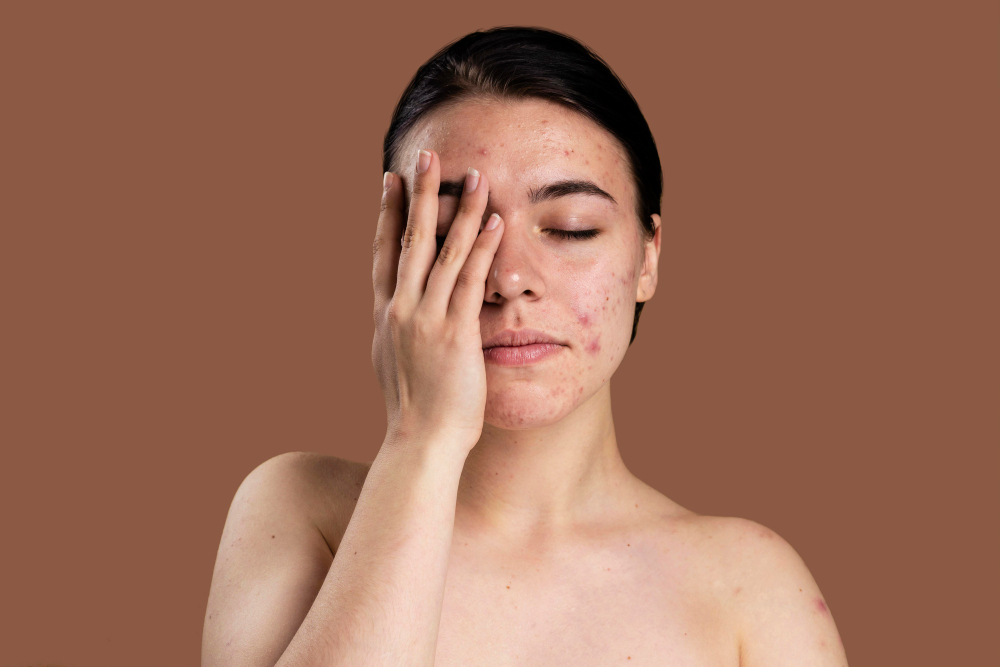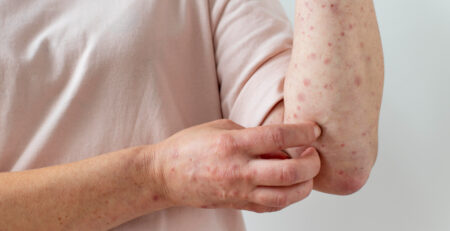Melasma
Melasma is a common skin problem. The disease makes your skin have dark, discoloured spots.
When it happens to pregnant women, it is also called chloasma or the “mask of pregnancy.” The condition affects women much more often than men, but men can also get it. The American Academy of Dermatology says that women are 90 percent of the people who get melasma.
Symptoms of melasma
Melasma makes spots of colour on the skin. The spots are darker than the rest of your skin. It usually shows up on the face and has marks on both sides of the face that are the same. Melasma can also show up on other parts of your body that get a lot of sun.
Most of the time, brownish spots show up on:
- cheeks
- forehead
- bridge of the nose
- chin
It can also happen on the neck and forearms. The skin discoloration doesn’t hurt you in any way, but it may make you feel bad about yourself because of how it looks.
If you have these signs of melasma, you should talk to a doctor. They might tell you to see a dermatologist, who is a doctor who specialises in skin problems.
Causes and risk factors of melasma
No one knows for sure what causes melasma. People with dark skin are more likely to get sick than those with fair skin. The condition is also linked to sensitivity to oestrogen and progesterone. This means that hormone therapy, taking birth control pills, and being pregnant can all cause melasma. Melasma may also be caused by Stress or a problem with the thyroid.
Melasma can also be caused by the sun because UV rays affect the cells that control pigment (melanocytes).
How is melasma diagnosed?
Melasma is often easy to spot just by looking at the affected area. Your health care provider may also do some tests to rule out certain causes.
A Wood’s lamp examination is one way to test something. This is a special kind of light that is held close to your skin. It lets your doctor check for bacterial and fungal infections and find out how many layers of skin are affected by the melasma. They might also do a biopsy to see if there are any serious skin conditions. To do this, a small piece of the affected skin is cut off and sent to a lab for testing.
Is melasma treatable?
Melasma goes away on its own for some women. Most of the time, pregnancy or birth control pills are to blame.
There are creams that can make the skin lighter that your doctor can give you. They might also give you creams that contain steroids to help lighten the spots. If none of these work, you could try chemical peels, dermabrasion, or microdermabrasion. The top layers of skin are taken off with these treatments, which may help lighten dark spots.
Melasma can come back after these procedures, and some cases of melasma can’t be completely lightened. If you don’t want the melasma to come back, you might have to go back for follow-up visits and keep doing certain things to your skin. These include staying out of the sun as much as possible and putting on sunscreen every day.
Coping and living with melasma
Even though not all cases of melasma can be cured, there are things you can do to make sure it doesn’t get worse and to make the discoloration less noticeable. These things are:
- using makeup to cover areas of discoloration
- taking prescribed medication
- wearing sunscreen every day with SPF 30
- wearing a wide-brimmed hat that shields or provides shade for your face
If you’ll be out in the sun for a long time, it’s especially important to wear protective clothing.
If your melasma makes you feel bad about yourself, talk to your doctor about support groups or counsellors in your area. Talking to someone or meeting other people with the same condition can help you feel better.









Leave a Reply